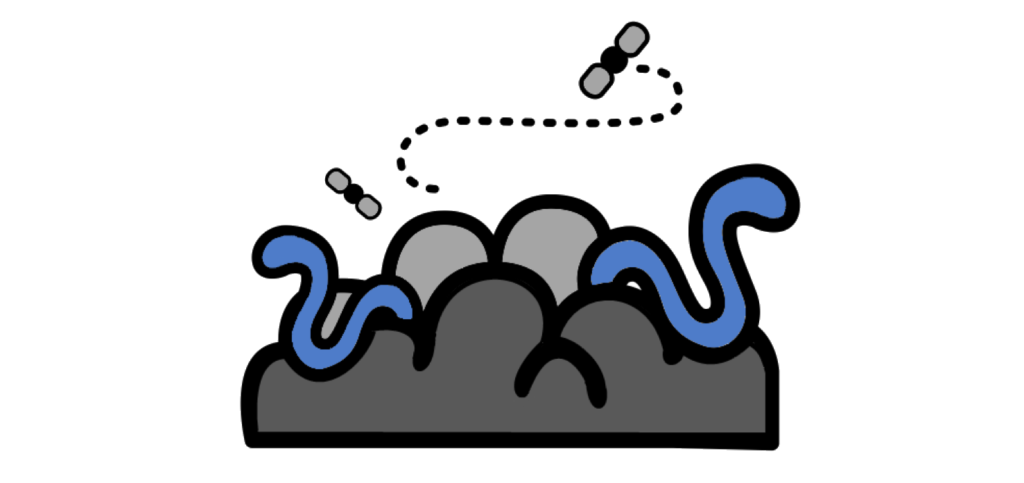So far, I’ve mostly written about how to improve productivity/efficiency with systems and tools. Because efficiency is the final goal, right?
Right…?
In Creativity, Inc., Ed Catmull, the president of Pixar and Disney Animation, addresses the danger of valuing efficiency above all else:
I see this over and over again […]: A subversion takes place in which streamlining the process or increasing production supplants the ultimate goal, with each person or group thinking they’re doing the right thing–when, in fact, they have strayed off course. When efficiency or consistency of workflow are not balanced by other equally strong countervailing forces, the result is that new ideas […] aren’t afforded the attention and protection they need to shine and mature. They are abandoned or never conceived of in the first place. Emphasis is placed on doing safer projects that mimc proven money-makers […]. This kind of thinking yields predictable, unoriginal fare because it prevents the kind of organic ferment that fuels true inspiration.
I can see how it makes sense to avoid “efficiency above all else” in a creative field, like film production. Imagine trying to streamline a painter’s or a musician’s process! Even if you could do it, you’d end up with a miserable, uncreative artist. The inefficiency — the messiness and lack of constant productivity — helps fuel the magic.
But what about less creative fields, like tech? Okay, by now we all know that tech is actually extremely creative, so that’s a bad example. So what about much less creative fields, like car manufacturing? Is car manufacturing, at least, allowed to value “efficiency above all else”?
Well, a lot’s been written about car manufacturing, specifically Japanese car manufacturing in the 1940s-70s. Toyota, specifically, didn’t have the mass production capabilities that American companies did, so they had to work with small batches of products. Instead of keeping production going constantly, they empowered all employees to stop the production line whenever they noticed a problem, avoiding wasting any materials. From an American productivity/efficiency standpoint, this was ridiculous. So much wasted time and labor! But it worked. Toyota’s seemingly inefficient process got them back on top, and now it’s held up as the pinnacle of good production, even leading to tech systems like agile and scrum.
So I’m going to argue that there are very few fields (even the seemingly uncreative ones) that don’t require a least little inefficiency to fuel the magic. Chaos for chaos’s sake doesn’t get us anywhere; it has to be just the right kind of inefficiency and for the right reason.
Ed Catmull says, “My job as a manager is to create a fertile environment, keep it healthy, and watch for the things that undermine it.”
When I envision a fertile environment, I imagine the Earth’s ground: full of dirt and nutrients, manure and bugs, and roots leftover from whatever grew there last. In contrast, when I try to imagine an efficient environment, I image a tiled, sanitized floor. So clean, so efficient, you could slide right across it! Think about if we tried tried to make Earth more efficient by tiling over it: we’d kill its fertility.
In other words, a hyper-focus on efficiency can kill fertility. When you and your team are trying to do good work–not just busywork, but something that makes a real difference–you need fertility so much more than you need efficiency.
Here are some of Ed Catmull’s tips for cultivating a fertile environment:
Resist Occam’s razor, which says that the simplest explanation is usually the right one. Remember that there is so much chance, randomness, and nuance that goes into making something a success or a failure. If you accept the simplest (and more efficient) explanation for why your team is a success or a failure, you’re ignoring the nuance that can show you how to do even better next time.
Appreciate the storms. In an ecosystem, there are some bright and sunny days, but there are also rainy and stormy days. Similarly, in the workplace, there are things that go well, and there are teams or projects that go awry. If you write all the conflicts off as purely “bad,” you’re not taking the time to see what positive things they may have contributed to your ecosystem.
Hold lightly to goals and firmly to intentions. There will be times when you don’t reach your goals. From a project management/efficiency standpoint, this is painful. But if you and your team held firm to your intentions, chances are you still ended up somewhere on the right path. Or somewhere even better.
So take a step away from efficiency to ask yourself: How can I creative a more fertile environment for my team and myself?
And while you’re at it, go read Creativity, Inc.
Ground and worms icon by Blaise Sewell.

